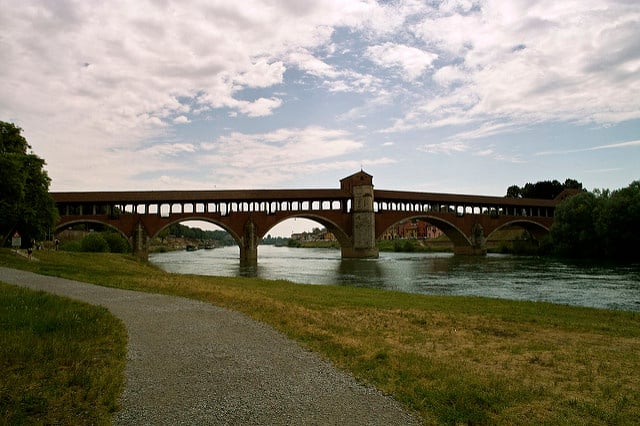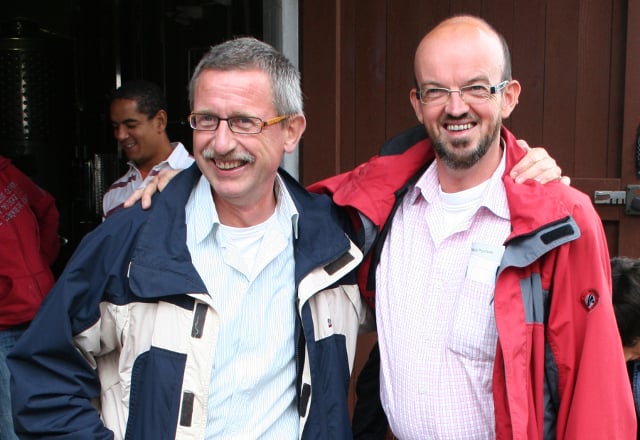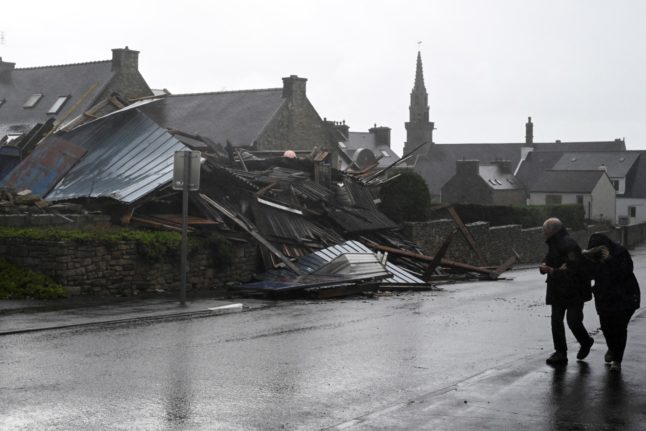What made you decide to move to Italy, and specifically Pavia?
There was no specific moment when we decided to move permanently. When I was studying at Utrecht University in the Netherlands, they required me to do a six-month stay abroad, so I went to Pavia.
The Oltrepò Pavese region where we live now, about 30 km south of Pavia itself, in the hills and amidst the vineyards, we discovered accidentally. It was only then that we started dreaming of moving permanently as the surroundings were so beautiful and completely unspoilt.

Pavia's Ponte Coperto. Photo: Almusaiti/Flickr
What made you decide to collect the stories in a book?
We decided to write a blog from the beginning of our Italy adventure and years later, I thought about writing a book using the material. The stories are intended to inform and amuse at the same time.
Are there any Italian stereotypes you found were true, or perhaps something you learned about Italy that surprised you?
The biggest surprise for me was that I found many Italians to be rather pessimistic and hypochondriac, instead of the jolly sunny characters we usually see in depictions of Italy, where life is supposed to be dolce every day. They often criticize their country.
The stereotypes about Italians being late and driving like madmen are mostly true, but on the whole Italians are definitely more relaxed and easy going than the Dutch.

Nico and Stef. Photo: Private
Is there anything about Italy that you've really struggled to get used to?
Italians are not decision makers. They'll often postpone plans and change ideas – in a win-win situation they usually end up with a no-win.
There seems to be a fear of making the wrong choice, which is so large that they prefer not to act and let fate decide. The mindset is that in order to avoid disappointment, it is better not have illusions about what you can achieve.
Were there any moments when you considered giving up and leaving Italy?
No, not at all, even after eight years living here.
What should people know before deciding to make the move?
Learn the language before you go. Choose a region that is populated and not somewhere as isolated as Chianti, for example, where you might feel very lonely in winter.
.jpg)
Photo: Private
Below is an extract from the book, Living in Italy: The Real Deal.
With my right foot still on the pavement, the estate agent’s car was already pulling away. Obviously they had no time to waste!
We were going to look at two properties in the Oltrepò Pavese, the area lying south of the river Po which traverses Northern Italy. I sat in the front and the estate agent prattled on in hundred-mile-an-hour Italian. I only understood bits of what he was saying, partly because I was too disconcerted by the traffic which we were navigating with Italian flair.
For the last few weeks, we had lived in the quiet, historical, university town of Pavia. In the next six months, I was going to continue with my MA in Medieval Culture, and my husband, Nico would enjoy his well-earned sabbatical. He was going to hoover, do the shopping and cook, whilst I could immerse myself in times gone by. But there was this secret, unspoken wish that didn’t leave us alone: could we…., what if we…, imagine if…?
And already, just a couple of weeks into our stay in Pavia, we started looking at properties, with the intention of permanently settling down and setting up a B&B! Soon after our arrival in Pavia, we discovered the wine region of Oltrepò Pavese, an area about half an hour’s drive to the south of Pavia. It was love at first sight. What beautiful countryside!
Once we got out of Pavia, the roads became quieter and I was able to follow Olita’s – as he was called – Italian a bit better. He was busy showing off his property know-how and reassuring us about the top quality of the houses we were about to see. If there was anything not to our liking, it could be easily sorted, without any additional costs, he said. He had already made an agreement with the owners.
“Non ci sono problemi!” he exclaimed with much enthusiasm. If we didn’t like the colour of the house, it could be painted over, before completion, in any colour at all, even violet, maintained Olita. “Non ci sono problemi!” And the garden that had become a jungle from months (probably years?) of neglect would be completely cleared out, just for us.
We took in the landscape in front of us: it was mainly flat, covered in rice fields (growing the famous Italian risotto), farmland and poplar plantations, as far as the eye could see. Along the country road, we were driving past settlements: an endless mish-mash of houses and farm buildings of all shapes and sizes. We raced through small villages with stores, restaurants and cafés. Olita was consistently indifferent to the numerous white traffic signs warning of upcoming speed cameras. Did his employer pay the fines? Or was it going to become a hidden charge on our bill?
We were fully aware that we were going to have to pay Olita commission if we were to buy our house through him. We had done our homework in the Netherlands and were well-prepared for all the traps that a would-be house buyer could fall into when trying to buy a house in Italy. We were on high alert! Olita, unaware of my misgivings, drove on at full speed.
We reached Ponte della Becca, the one kilometre long iron bridge built in 1912 that spans the merging of the Po and the Ticino. The Oltrepò stretched on the other side, flat at first, but soon undulating with hills. There in the distance our dream house was waiting for us somewhere.
We saw the first vineyards appearing here and there. On one of the hillsides we spotted a remarkable-looking castle and we inquired about it from our local regional expert, a.k.a. Olita.
“Which castle is that?” we asked full of curiosity. He didn’t know. But “Non ci sono problemi,” he would investigate and let us know. Maybe our house was not going to be violet after all.
It soon became apparent why Olita was in such a hurry: he was lost and was zooming up and down the hills in search of familiar landmarks. Against all expectations, we managed to find our chosen house, which didn’t look as perfect as we at first had thought, not even if Olita would have it painted violet. On one side it leant against a slope, and the other side was blocked from view by an unsightly shed. The garden was no bigger than a postage stamp.
What a shame. Luckily, on the advice of Olita’s Agenzia, we had also made an appointment to view another property that was on offer at a bargain price. This second house didn’t look appealing in the brochure: a faded grey concrete block without any character. But now that we were here…we might as well take a look.



 Please whitelist us to continue reading.
Please whitelist us to continue reading.
Member comments